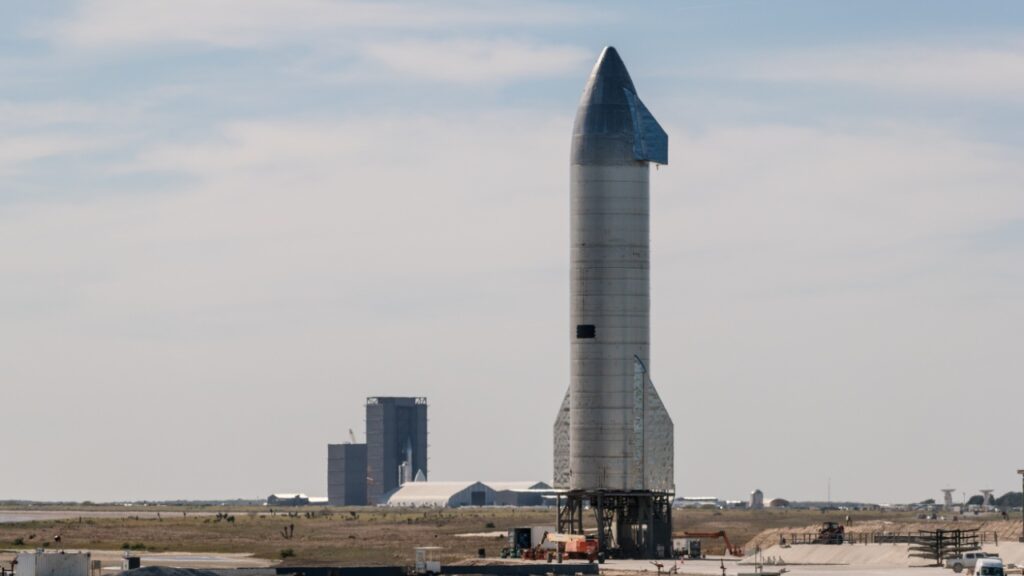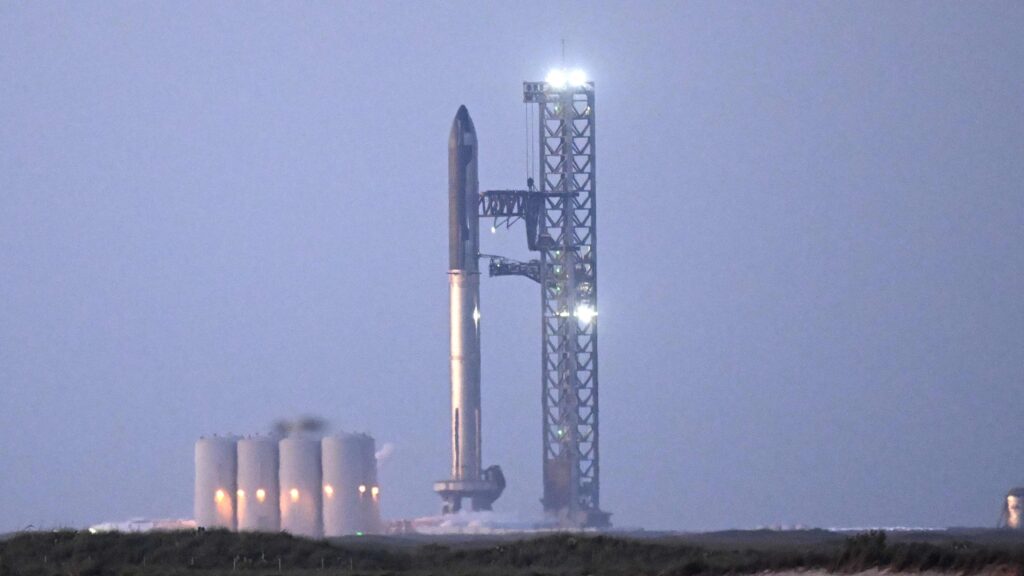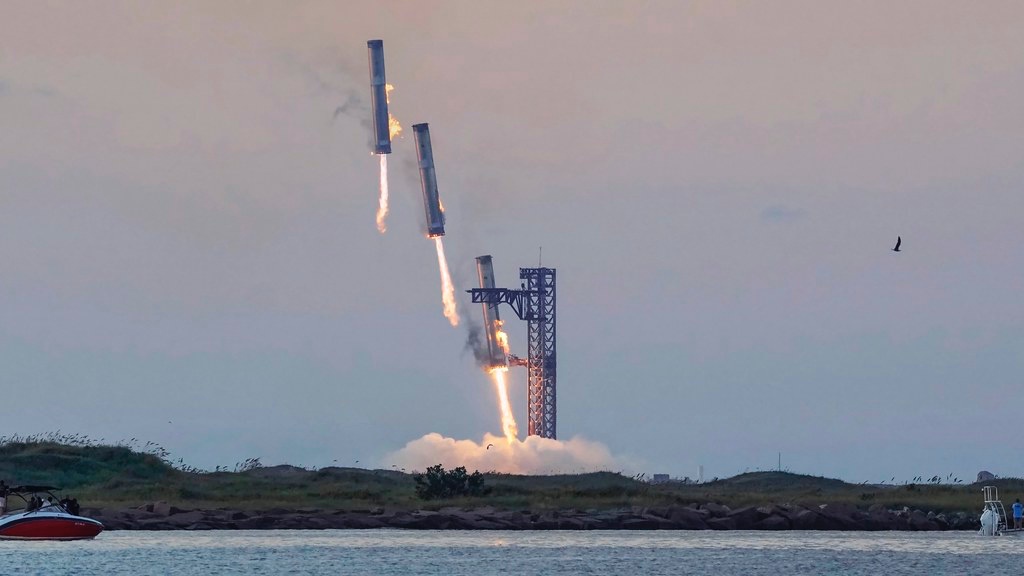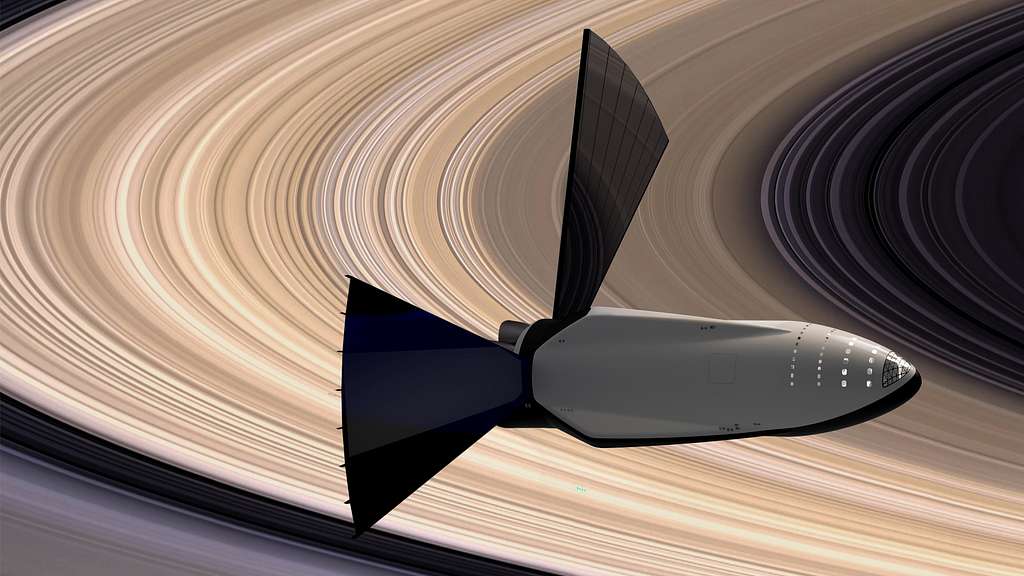SpaceX has once again stunned the aerospace community with groundbreaking upgrades to its Superheavy Booster V3, particularly the revolutionary new grid fins that have industry experts buzzing. Alongside these advancements, SpaceX has completed testing for Flight 10, putting the eagerly awaited launch just days away.
Meanwhile, NASA continues its preparations for the Artemis 2 mission, recently completing crucial fueling operations for the Orion spacecraft. This blog post dives deep into these exciting developments, revealing the full scope of what’s coming next in spaceflight.
Introduction: A New Chapter in Spaceflight Technology
The space industry is buzzing with excitement following SpaceX’s latest announcements regarding Starship’s Superheavy Booster V3. The combination of enhanced design features and critical testing milestones marks a pivotal moment in commercial space exploration. With Flight 10 approaching rapidly, and NASA’s Artemis program advancing, this is a defining moment for humanity’s push beyond Earth.

In this article, we’ll explore:
- The detailed upgrades to the Superheavy Booster V3 and its innovative grid fins
- Progress and outlook for SpaceX’s Flight 10
- NASA’s fueling and assembly milestones for Artemis 2
- What these developments mean for the future of space exploration
Superheavy Booster V3: The Next-Gen Powerhouse
Why the Superheavy Booster Matters
The Superheavy Booster is the first stage of SpaceX’s Starship launch system, providing the colossal thrust needed to lift the Starship spacecraft into orbit. The V3 iteration represents a significant leap forward from earlier models, aiming to increase reliability, reusability, and overall mission performance.
Booster 18 and the Road to Launch
Currently, Booster 18 (B18) is nearing completion inside SpaceX’s massive mega bay, with stacking operations well underway. The forward section of Booster 19 (B19) has also been spotted on-site, prepared to support B18 assembly.
- The field transfer tube installation is complete on B18
- The forward section, a highly upgraded segment, is still pending and expected to arrive soon
The forward section incorporates two monumental upgrades:
- Hot staging integration
- Redesigned grid fins
Both of these improvements promise to redefine booster functionality.
Revolutionizing Flight Control: The New Superheavy Grid Fins
First Look at the V3 Grid Fins
SpaceX recently posted images of the first grid fin produced for the Superheavy V3 booster on X (formerly Twitter), confirming its production and imminent installation on B18.
Design Innovations
Key features of the new grid fins include:
- Octagonal Shape: Moving away from the traditional square design, the fins now have an octagonal form to optimize aerodynamic control.
- Size Increase: The fins are a massive 50% larger than previous versions, with Elon Musk jokingly calling them a “gigantic waffle.”
- Reduced Quantity: Only three grid fins will be used instead of four, leveraging size and strength for improved performance.
- Mass and Durability: These fins weigh around 3 tons each, a result of both their size and their newly integrated role.
Grid Fins and the Catching System Integration
Previously, the grid fins and the booster’s catching mechanism were separate. Now, SpaceX has ingeniously combined these into one system.
- Catching Point: A large pin with a hole is mounted beneath the grid fin near its central shaft, designed to engage directly with the launch tower’s “chopsticks” (Mechazilla arms).
- This integration enables the booster to be lifted and secured with higher precision and reliability, a crucial step toward rapid reusability and cost reduction.

Why This Upgrade is a Game-Changer
Enhanced Landing Flexibility
SpaceX’s two orbital launch pads have different catching systems:
- Pad 1 is optimized for Superheavy
- Pad 2 is optimized for Starship
By designing the grid fins’ catching points to resemble those used on Starship, the V3 booster gains flexibility to land on either pad, increasing operational versatility.
Structural and Thermal Considerations
- The fins are now mounted lower on the booster to reduce heat exposure from engine plumes during stage separation.
- Their shaft, actuator, and fixed components are located alongside the cryogenic fuel tank, presenting engineering challenges around temperature extremes and fuel pressure that SpaceX engineers are actively addressing.
Aerodynamic Efficiency and Fuel Savings
These upgraded grid fins allow for:
- A higher angle of attack during re-entry
- Reduced aerodynamic drag
- Improved control and precision during booster landing
- Overall fuel savings and better mission economics
Booster 18’s Final Steps Before Launch
Once the forward section with the hot staging ring is stacked, the Raptor 3 engines will be installed — another major V3 upgrade.
If testing and assembly continue smoothly, SpaceX could launch the first Starship V3 system before the end of 2025. This would mark a significant milestone in rapid, reusable orbital launch capability.
Flight 10: Testing, Challenges, and Countdown
Spin Prime Test Attempts
A spin prime test spins up the Starship engines and flows propellant without ignition to verify engine and fuel system stability.
- The first attempt was aborted due to a leak in the cryogenic flex hose of the fuel injection system — a critical, ultra-cold component.
- After swift repairs and inspections, the spin prime successfully completed on August 13th.
Successful Fueling and Engine Validation
Fuel loading involved:
- Visible venting from the propellant tanks and vehicle
- Auxiliary system tests including detonation suppression flaps
- Stable propellant flow confirmed by engineers with no ignition issues
This success validated Flight 10’s hardware and removed the need for further static fire tests before launch.

Next Phase for Starship 37 (S37)
After the spin prime, S37 was lifted from the launch mount for post-test inspections. Further preparations include:
- Installing the Flight Termination System (FTS)
- Payload integration
- Mating with Booster 16 (B16) expected between August 22nd and 25th
Launch Window and Timeline
- The launch window for Flight 10 remains open through August 28th.
- Liftoff is likely around August 27th, three months after Flight 9 — underscoring SpaceX’s rapid testing and launch cadence.
NASA’s Artemis 2 Mission: Progress and Prospects
Fueling Milestone for Orion Spacecraft
NASA’s Artemis 2 mission is also accelerating. The Orion spacecraft recently completed fueling at Kennedy Space Center’s Multi-Payload Processing Facility (MPPF).
- Following weeks of system checks and subsystem tests, the propulsion and life support systems are now fueled and ready.
Launch Abort System Integration
Orion moved to the Launch Abort System Facility (LSF) to install its 44-foot launch abort system, essential for crew safety in emergencies.
- This system can rapidly propel the capsule away from the Space Launch System (SLS) rocket if needed during ascent.
Stacking and Testing
The fully assembled Orion will be transported to the Vehicle Assembly Building (VAB) to be stacked atop the SLS rocket. Integrated testing will follow to ensure launch readiness.
Crew Preparations and Suit Evaluations
The Artemis 2 crew has begun:
- Wearing and testing their Orion Crew Survival System space suits inside the capsule
- Evaluating mobility, communications, and life support systems
- Simulating pre-launch and in-flight conditions
Though the official Artemis 2 launch date is April 2026, NASA aims for a February 2026 target to maintain schedule flexibility and ensure mission success.
Why These Developments Matter: The Future of Space Exploration
SpaceX’s Rapid Innovation and Commercial Spaceflight
- The Superheavy V3 upgrades, especially the massive grid fins integrated with the catching system, highlight SpaceX’s focus on reusability and cost reduction.
- Flight 10’s imminent launch could demonstrate the system’s readiness and bring us closer to routine space access.

NASA’s Artemis Program: Returning Humans to the Moon
- Artemis 2 will be the first crewed mission of the Artemis program, paving the way for future lunar exploration and beyond.
- NASA’s steady progress, combined with rigorous safety testing, exemplifies the agency’s commitment to sustainable human spaceflight.
Conclusion: Looking Forward to a Historic Era in Space
With SpaceX’s revolutionary Superheavy V3 grid fins and booster upgrades, Flight 10 poised for launch, and NASA’s Artemis 2 mission advancing steadily, we are witnessing an exciting new chapter in space exploration.
This convergence of commercial and government spaceflight efforts promises to redefine how humans reach orbit, the Moon, and eventually Mars.
FAQs
1. What is the Superheavy Booster V3?
The Superheavy Booster V3 is the latest iteration of SpaceX’s first-stage booster for the Starship system, featuring major design upgrades including new grid fins and hot staging technology.
2. How are the new grid fins different from previous versions?
The V3 grid fins are 50% larger, octagonal-shaped, stronger, and integrated with the catching system to improve control and booster recovery.
3. Why does the Superheavy V3 have only three grid fins instead of four?
The larger size and enhanced strength of each grid fin allow SpaceX to reduce the total number to three without compromising control.
4. What is the purpose of integrating the grid fins with the catching system?
This integration enables the grid fins to also serve as catching points, allowing the booster to be lifted and secured by the launch tower’s Mechazilla arms during landing.
5. What is hot staging, and why is it important in the Superheavy V3?
Hot staging is a method where the upper stage’s engines ignite before the lower stage separation, improving efficiency and reducing the time between stages.
6. When is the first launch of the Superheavy V3 expected?
If all testing and assembly remain on schedule, the first V3 launch could happen by the end of 2025.
7. What is Flight 10, and why is it significant?
Flight 10 is the upcoming Starship test flight that will demonstrate hardware upgrades and validate the readiness of the vehicle for future missions.
8. What is a spin prime test?
A spin prime test spins up the engines and flows propellant without ignition to verify engine stability and fuel system performance.
9. Why was the first spin prime test for Flight 10 aborted?
It was aborted due to a leak in the cryogenic flex hose of the fuel injection system, which was quickly repaired by technicians.
10. What role do the Raptor 3 engines play in the Superheavy V3?
Raptor 3 engines are the latest generation of SpaceX’s rocket engines, providing improved thrust and efficiency for the V3 booster.
11. How does the new grid fin design affect booster landing accuracy?
The larger, stronger fins allow for finer control during descent, enabling more precise and fuel-efficient landings.
12. What are the “chopsticks” or Mechazilla arms?
They are robotic arms on SpaceX’s launch towers designed to catch and secure the Superheavy booster during landing.
13. What progress has been made on NASA’s Artemis 2 mission?
Artemis 2’s Orion spacecraft has completed fueling, and the launch abort system installation is underway, preparing for the upcoming crewed lunar mission.
14. When is Artemis 2 scheduled to launch?
The official launch target is April 2026, with a goal to be ready as early as February 2026 to allow schedule flexibility.
15. What is the purpose of the Orion spacecraft’s launch abort system?
It’s a safety mechanism designed to rapidly propel the crew capsule away from danger in the event of a rocket failure during ascent.
16. How are Artemis 2 astronauts preparing for the mission?
They are conducting suit tests inside the Orion capsule to evaluate mobility, life support, and communications systems under mission-like conditions.
17. How does the Superheavy V3’s catching system improve turnaround time?
By integrating catching points into the grid fins, SpaceX can quickly secure and refurbish boosters for rapid reuse.
18. What are the main challenges of mounting grid fin components alongside cryogenic fuel tanks?
Engineers must ensure that extreme cold temperatures and fuel pressures don’t negatively affect mechanical reliability and safety.
19. How does Flight 10 fit into SpaceX’s overall Starship development plan?
Flight 10 is a critical test validating new hardware and paving the way for routine orbital Starship missions.
20. Why is SpaceX reducing the number of grid fins on Superheavy V3?
Larger, stronger fins provide better aerodynamic control, allowing fewer fins without losing performance.
21. What does the future look like for Starship and Superheavy with these upgrades?
The upgrades are designed to improve reliability, control, and reusability, bringing humanity closer to affordable, rapid space access and missions to the Moon, Mars, and beyond.
Read More:
- $6,789 Tesla Flying Car FINALLY Coming In 2026 At Giga Texas! Nobody Told You What’s Inside
- Tesla pushes crazy ‘Luxe’ incentive package on flagship Model S and X
- $6,789 Tesla Flying Car INSANE PRODUCE At Giga Texas! Not A Rumor
- Tesla is breaking even its own rules to cap off an intense Q3
- Tesla Roadster could have a formidable competitor with BYD’s 3000-HP supercar

